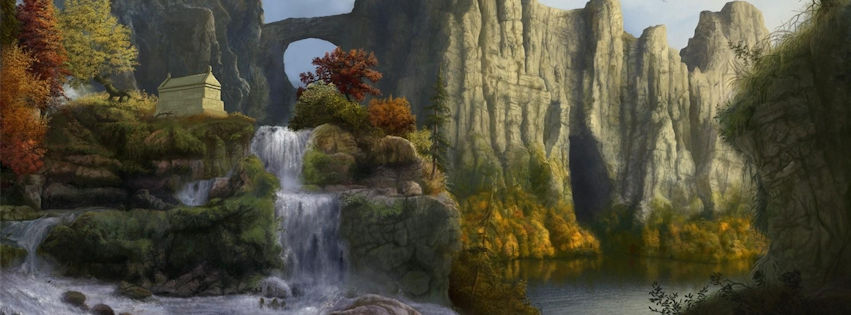Dûrthar Chasm
Carved deep into the bedrock of the Desolate Wastes, Dûrthar Chasm was the beating heart of Karak Dûr's mining operations, a sprawling complex of tunnels, shafts, and vast excavation sites that fueled the hold’s prosperity. Unlike the grand halls of the fortress above, the chasm was a place of raw industry, where dwarves toiled in the depths, hauling gold-laden stone, extracting veins of deep-iron, and uncovering the glittering fire opals that made Karak Dûr famous. The mine stretched for miles beneath the earth, following the natural faults and mineral seams that had first drawn the Khazdural Clan to the region. The lower depths, known as the Vein Roads, were a labyrinth of mining tunnels and smelting forges, where the work never ceased, day or night.
Despite the harsh conditions, the dwarves of Dûrthar Chasm took pride in their craft, treating mining as both a science and an art. The engineers of Karak Dûr reinforced the mine with massive stone buttresses, expertly crafted support beams, and ingenious pulley systems that allowed ore and raw stone to be ferried up to the hold. Deep within the chasm, an entire subterranean settlement—known as Stonewake—housed miners, overseers, and smelters, making it possible for work to continue for months without interruption. The labor was grueling, the air thick with smoke and dust, but the rewards were great, and the mine’s output ensured that Karak Dûr remained a vital part of the dwarven economy.
That prosperity, however, made Dûrthar Chasm a target. In 10 AV, when orcish hordes began their relentless assault on Karak Dûr, the chasm was the first to fall. The greenskins stormed the surface entrances, forcing the dwarves into a brutal tunnel war where pickaxes and mining tools became weapons of last resort. By 17 AV, with the chasm lost and its tunnels overrun, the defenders of Karak Dûr had no choice but to abandon the hold entirely, sealing what tunnels they could and fleeing into the Underway. What became of the chasm in the centuries since remains unknown, but rumors persist of vast, untapped vaults, of creatures that have made the ruins their home, and of ancient dwarven forges that still glow with embers, waiting for their masters to return.
Despite the harsh conditions, the dwarves of Dûrthar Chasm took pride in their craft, treating mining as both a science and an art. The engineers of Karak Dûr reinforced the mine with massive stone buttresses, expertly crafted support beams, and ingenious pulley systems that allowed ore and raw stone to be ferried up to the hold. Deep within the chasm, an entire subterranean settlement—known as Stonewake—housed miners, overseers, and smelters, making it possible for work to continue for months without interruption. The labor was grueling, the air thick with smoke and dust, but the rewards were great, and the mine’s output ensured that Karak Dûr remained a vital part of the dwarven economy.
That prosperity, however, made Dûrthar Chasm a target. In 10 AV, when orcish hordes began their relentless assault on Karak Dûr, the chasm was the first to fall. The greenskins stormed the surface entrances, forcing the dwarves into a brutal tunnel war where pickaxes and mining tools became weapons of last resort. By 17 AV, with the chasm lost and its tunnels overrun, the defenders of Karak Dûr had no choice but to abandon the hold entirely, sealing what tunnels they could and fleeing into the Underway. What became of the chasm in the centuries since remains unknown, but rumors persist of vast, untapped vaults, of creatures that have made the ruins their home, and of ancient dwarven forges that still glow with embers, waiting for their masters to return.
"Before it fell, a mine like that would have been every dwarf's dream; now, it's nothing more than a tomb." - Griswold Ironhammer
RUINED STRUCTURE
17AV
17AV




Comments